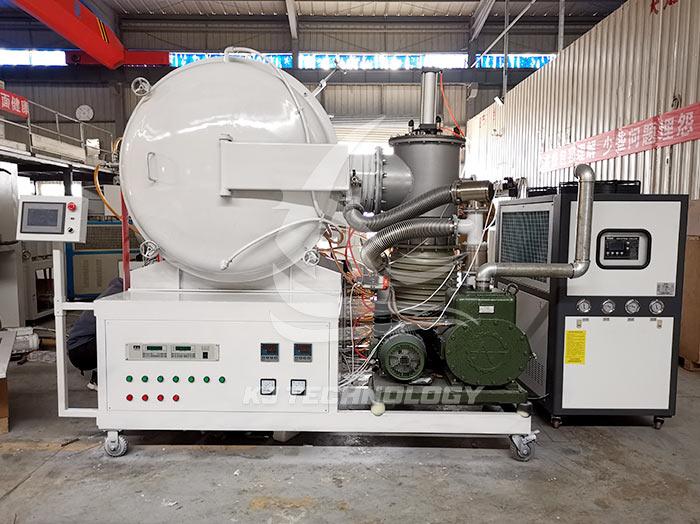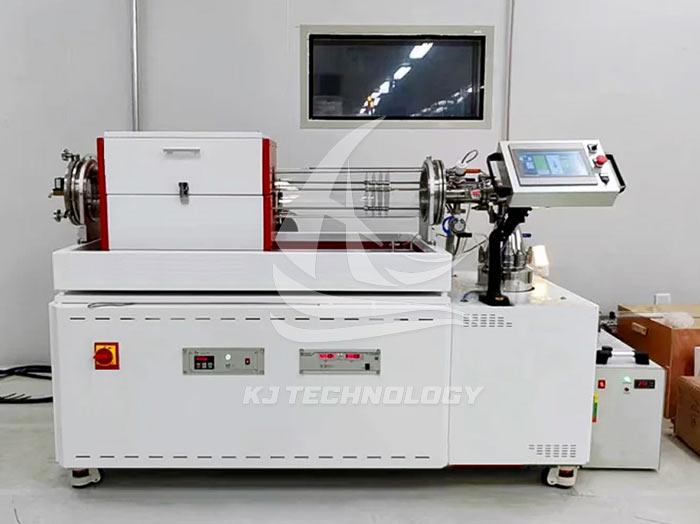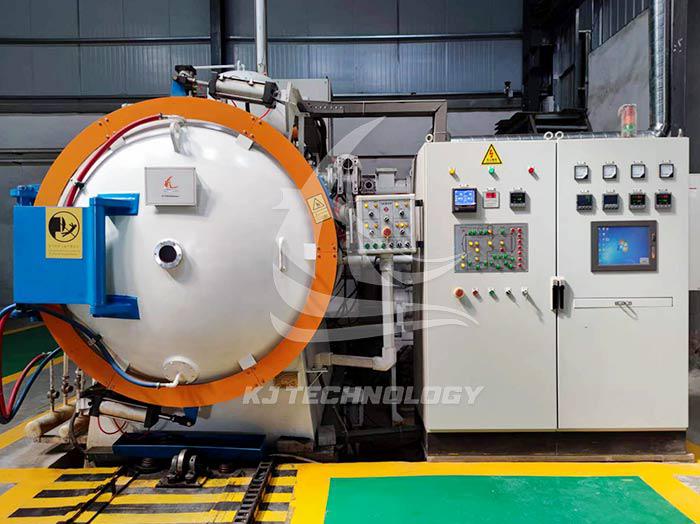Application of Vacuum Heat Treatment Atmosphere Electric Furnace in Powder Metallurgy Industry
 06-30-2025 Author: KJ technology
06-30-2025 Author: KJ technology
The vacuum heat treatment atmosphere electric furnace is widely and crucially used in the powder metallurgy industry. By precisely controlling the vacuum degree and atmosphere composition, it provides an ideal sintering and heat treatment environment for powder metallurgy products, significantly improving material properties and product quality. The following is an analysis of specific application scenarios and advantages:
1. Core application scenarios
powder sintering
Function: Heat metal powder compacts to a temperature below the melting point in a vacuum or specific atmosphere (such as hydrogen or nitrogen), causing solidification between particles and forming a dense sintered body.
Advantages:
Avoid oxidation: Vacuum environment can prevent powder from oxidizing at high temperatures, reduce impurity generation, and improve the purity of sintered bodies.
Densification control: By adjusting the vacuum degree and temperature curve, the porosity and grain size are precisely controlled to prepare high-strength, high-density parts (such as iron-based and copper based structural parts).
Active metal treatment: suitable for sintering easily oxidizable metals such as titanium and zirconium, avoiding performance instability caused by fluctuations in atmosphere composition in traditional atmosphere furnaces.
Fusion infiltration and alloying
Function: To infiltrate low melting point metals (such as copper) into the pores of high melting point metals (such as steel) in a vacuum or reducing atmosphere, forming an alloyed structure.
Advantages:
Uniform infiltration: The vacuum environment promotes the flow and diffusion of liquid metal, ensuring uniform thickness of the infiltration layer and improving the overall performance of the material (such as wear resistance and conductivity).
Reduce defects: Avoid impurities such as oxygen and moisture in the atmosphere from participating in the reaction, and reduce the rate of defects such as pores and cracks.
Degassing and pretreatment
Function: Heat powder compacts under vacuum to remove adsorbed gases (such as hydrogen and nitrogen) and volatile impurities (such as lubricants).
Advantages:
Improving purity: Degassing treatment can reduce the porosity inside the material, increase density, and reduce the risk of aging embrittlement during subsequent heat treatment.
Improving process stability: The pre treated compact shrinks more evenly during sintering, reducing deformation and cracking.
2. Analysis of Technical Advantages
Accurate control of atmosphere
Support single or mixed atmospheres such as hydrogen, nitrogen, argon, etc., to meet the process requirements of different materials. For example:
Carburizing treatment: achieving gradient control of surface carbon concentration in a nitrogen/methanol atmosphere to improve the wear resistance of parts.
Reductive atmosphere: Hydrogen atmosphere can reduce oxides on the surface of powders and enhance sintering activity.
Temperature uniformity
Adopting multi zone independent temperature control technology (such as 6-zone heating) to ensure a uniform temperature field (± 5 ℃) inside the furnace and avoid performance differences caused by local overheating or underheating.
Low deformation amount
Vacuum environment reduces thermal stress, combined with gradient cooling system, reduces workpiece deformation by 50% -80% compared to air furnace, suitable for precision parts such as micro gears and bearings.
energy conservation and environmental protection
Vacuum environment reduces heat loss and energy consumption by 20% -40% compared to air furnaces; No exhaust emissions, in compliance with environmental protection requirements.
3. Typical application cases
Iron based powder metallurgy parts
Scenario: High strength components such as car engine gears and connecting rods.
Process: Sintering under vacuum, combined with high-temperature tempering, to obtain properties with tensile strength ≥ 800 MPa and elongation ≥ 8%.
Effect: Compared to traditional atmosphere furnaces, the component density has increased by 5% and the fatigue life has been extended by 30%.
carbide tool
Scenario: WC Co hard alloy drill bit, milling cutter.
Process: Liquid phase sintering in vacuum/hydrogen atmosphere, controlling the uniformity of cobalt phase distribution (σ ≤ 5%).
Effect: Bending strength ≥ 3000 MPa, tool life increased by 2 times.
Titanium alloy implants
Scenario: Artificial joints, dental implants.
Process: Annealing under vacuum to eliminate casting defects and form a uniform oxide layer (thickness 2-5 μ m) on the surface.
Effect: The biocompatibility is significantly improved, and the inflammatory response rate after implantation is reduced by 60%.








